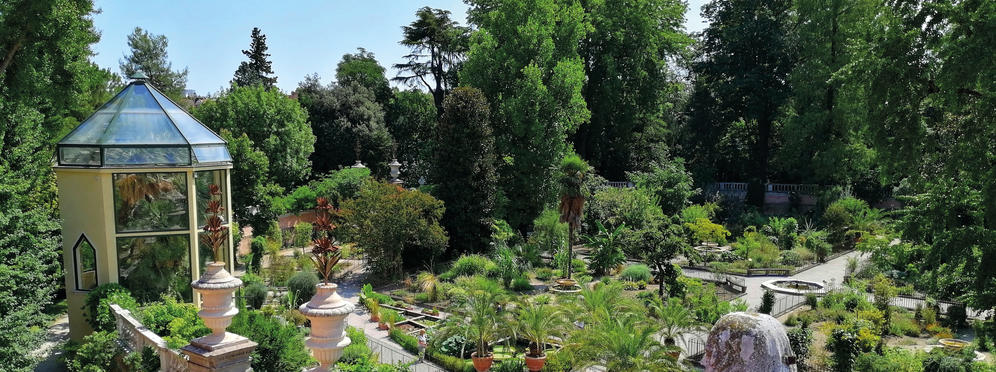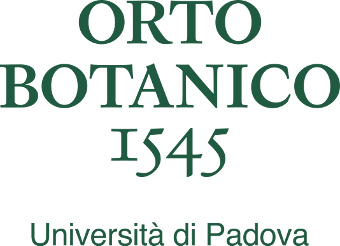Trees
The Botanical Garden hosts incredibly old plants, usually called "historic trees".

The Botanical Garden hosts incredibly old plants, usually called "historic trees". Like all the plants in the Garden, they are labelled with the scientific name (Latin binomial) of the species, the initials of the scholar who first denominated and described them correctly, their family and place of origin and, in this case, also the year they were planted in the Garden. The Hortus sphaericus has a Mediterranean palm (Chamaerops humilis L.) which is, at present the oldest plant in the Garden, as it was planted in 1585; it is famous thanks to Goethe, who dedicated to it some of his essays and scientific works. There is also a Ginkgo (Ginkgo biloba L.) dated 1750, and a Southern magnolia which was probably planted in 1786 and which is considered to be the oldest in Europe. Other historic trees grow in the Arboretum (outside the circular wall), which was created in the second half of the 18th century thanks to the Prefects Giovanni Marsili and Roberto de Visiani.
This area also contains an artificial hillock ("Montagnola" or Belvedere) with winding paths recalling romantic English gardens. Here it is a gigantic hollow-trunked Oriental plane (Platanus orientalis L.) (1680) and a Himalayan cedar (Cedrus deodara (D.Don) G.Don fil.) not as old as the previous tree and therefore not yet historic, but nevertheless important, as it was the first of this species to be introduced into Italy (1828).
Interesting, although not historic trees, are the old Bald cypress (Taxodium distichum (L.) Rich.), native to the marshlands of Florida and Louisiana, along the Unicorn canal near the entrance bridge (Ponte delle Priare), and a Dawn redwood (Metasequoia glyptostroboides Hu& Cheng), a species known only as a fossil until 1941, when it was found living in western China. Its seeds were distributed all over the world, and a specimen has been living in the Botanical Garden of Padova since 1961, in the medicinal quarter near the south gate, next to the enclosing wall. Until 1984, an ancient specimen of Chaste tree (Vitex agnus-castus L.), which dated back to 1550, lived near the north gate.
The Arboretum contains also two fragments of trunks for teaching purposes. The cross-section of the base of a European field elm (Ulmus minor L.), which lived in the Garden for about 150 years and died of a fungal disease in 1991, shows the annual growth rings (marked with small nails) and therefore its age. A fragment of the subfossil trunk of a large oak, precisely an English oak (Quercus robur L.) recovered during excavations near Padova, was found to be 2650 years old (dated with radioactive carbon methods); it is essential in identifying the type of vegetation in the Po Plain before man started deforestation. Unfortunately, contact with the air and colonisation by various micro-organisms have accelerated its decay.






